The local COVID-19 situation is at a critical threshold, but it can hopefully be brought under control in the next couple of weeks, the Central Epidemic Command Center said yesterday.
The center made the remarks after reporting 274 locally transmitted cases, 73 backlogged cases and 15 deaths.
Of the 274 local infections, 129 are male and 145 are female, from under the age of five to older than 90, said Minister of Health and Welfare Chen Shih-chung (陳時中), who heads the center.
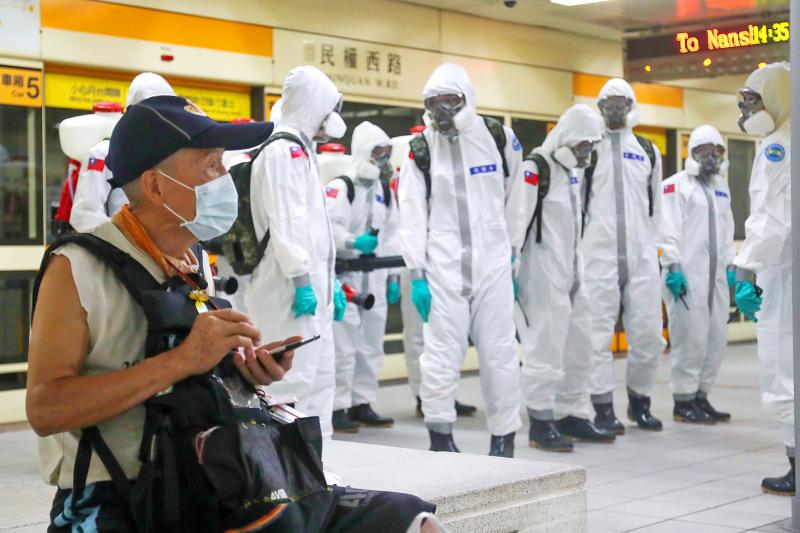
Photo: CNA
They began showing symptoms between April 29 and Sunday, he said.
Of the 73 backlogged cases, 36 are male and 37 are female, from under the age of five to over 90, Chen said.
They began experiencing symptoms between May 14 and Saturday, he added.
Among all 347 cases reported yesterday, 171 live in New Taipei City, followed by Taipei with 122, Taoyuan with 27, Changhua County with 10, Taichung with five, Keelung and Miaoli County with three each, Hsinchu City with two, and one each in Kaohsiung, and Hualien, Penghu and Hsinchu counties.
Two of the 54 cases who do not live in Taipei or New Taipei City had visited Taipei’s Wanhua District (萬華), 46 have clear infection sources, and six have an unclear association with previous cases, Chen said.
The 15 deaths due to COVID-19 are nine men and six women, aged 60 to 100. They began experiencing symptoms between May 11 and Friday, and tested positive between May 17 and Sunday. They died between May 21 and Saturday.
Centers for Disease Control (CDC) Deputy Director-General Philip Lo (羅一鈞), deputy head of the CECC’s medical response division, said that among the 7,080 cases confirmed since April 20, 1,055 people, or 14.9 percent, showed symptoms of the disease, including severe pneumonia or acute respiratory distress.
Among those aged 60 or older, 27.5 percent experienced serious COVID-19 symptoms, which is a relatively high percentage, he said, adding that many of them have underlying health conditions or are elderly people.
Since the center began adding backlogged cases on May 21, the number of daily backlogged cases has gradually dropped from a peak of 400 on May 21 to 89 on Sunday and 73 yesterday, showing that the pending cases are being cleared, and as a result the efficiency of placing confirmed cases under isolation would increase, Chen said.
The CECC will continue to make rolling adjustments to the implementation of enhanced disease prevention measures under the level 3 COVID-19 alert and endeavor to shorten the period between a person undergoing testing and being placed under isolation, which would bring the virus under control, he said.
The CECC has also ordered monoclonal antibody drugs, which would be administered to patients who are at a high risk of developing severe symptoms from COVID-19 to protect them and reduce the burden on the healthcare system, he added.
“The recent wave of local outbreaks has gradually slowed down,” Chen said, citing the latest effective reproduction number (Rt), which has dropped to 1.02 from a peak of about 15 from May 13 to 15.
The COVID-19 alert was raised to level 3 in Taipei and New Taipei City on May 15, and nationwide on May 19, Chen said, adding that the decline in the Rt value shows that people’s compliance with the enhanced public health measures has been effective.
CDC Deputy Director-General Chuang Jen-hsiang (莊人祥), who is the CECC’s spokesperson, said most people are more familiar with the basic reproduction number (R0), which refers to the predicted average number of people who contracts the disease from an infected person, in a population where everyone is susceptible.
However, a population is totally susceptible to an infection after outbreaks, so the Rt value is the expected average number of new infections caused by an infectious case, in a population where some individuals are no longer susceptible, he said.
When the Rt value is one, it means that each infectious person can on average transmit the disease to one other person, and if the Rt value drops below one, there would be a decline in the number of cases, bringing the epidemic under control, he said.
“Having gone through a period of implementing enhanced measures, we are at a critical threshold,” Chen said. “I want to tell everyone that their sacrifices and efforts have been effective [in curbing the spread of COVID-19], but we must continue them in the next couple of weeks to bring the Rt value to below one.”
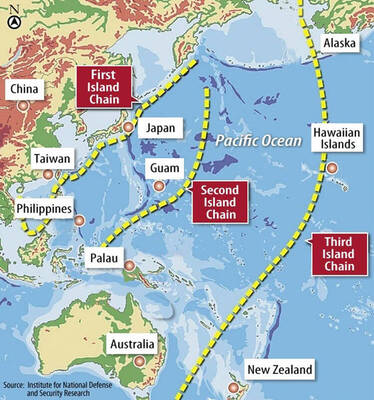
The US government has signed defense cooperation agreements with Japan and the Philippines to boost the deterrence capabilities of countries in the first island chain, a report by the National Security Bureau (NSB) showed. The main countries on the first island chain include the two nations and Taiwan. The bureau is to present the report at a meeting of the legislature’s Foreign Affairs and National Defense Committee tomorrow. The US military has deployed Typhon missile systems to Japan’s Yamaguchi Prefecture and Zambales province in the Philippines during their joint military exercises. It has also installed NMESIS anti-ship systems in Japan’s Okinawa
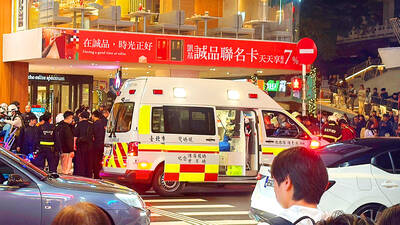
TRAGEDY STRIKES TAIPEI: The suspect died after falling off a building after he threw smoke grenades into Taipei Main Station and went on a killing spree in Zhongshan A 27-year-old suspect allegedly threw smoke grenades in Taipei Main Station and then proceeded to Zhongshan MRT Station in a random killing spree that resulted in the death of the suspect and two other civilians, and seven injured, including one in critical condition, as of press time last night. The suspect, identified as a man surnamed Chang Wen (張文), allegedly began the attack at Taipei Main Station, the Taipei Fire Department said, adding that it received a report at 5:24pm that smoke grenades had been thrown in the station. One man in his 50s was rushed to hospital after a cardiac arrest
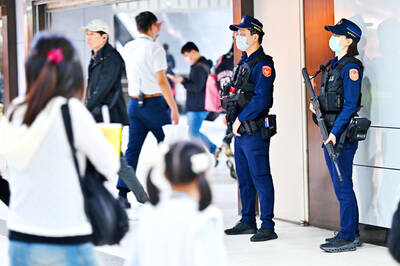
PUBLIC SAFETY: The premier said that security would be tightened in transport hubs, while President Lai commended the public for their bravery The government is to deploy more police, including rapid response units, in crowded public areas to ensure a swift response to any threats, President William Lai (賴清德) said yesterday after a knife attack killed three people and injured 11 in Taipei the previous day. Lai made the remarks following a briefing by the National Police Agency on the progress of the investigation, saying that the attack underscored the importance of cooperation in public security between the central and local governments. The attack unfolded in the early evening on Friday around Taipei Main Station’s M7 exit and later near the Taipei MRT’s Zhongshan
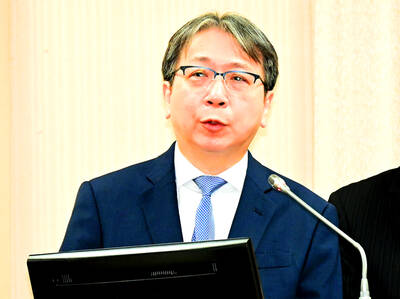
ON ALERT: Taiwan’s partners would issue warnings if China attempted to use Interpol to target Taiwanese, and the global body has mechanisms to prevent it, an official said China has stationed two to four people specializing in Taiwan affairs at its embassies in several democratic countries to monitor and harass Taiwanese, actions that the host nations would not tolerate, National Security Bureau (NSB) Director-General Tsai Ming-yen (蔡明彥) said yesterday. Tsai made the comments at a meeting of the legislature’s Foreign Affairs and National Defense Committee, which asked him and Minister of National Defense Wellington Koo (顧立雄) to report on potential conflicts in the Taiwan Strait and military preparedness. Democratic Progressive Party (DPP) Legislator Michelle Lin (林楚茵) expressed concern that Beijing has posted personnel from China’s Taiwan Affairs Office to its